
If you are anything like me, you were watching Sarah Jessica Parker host Saturday Night Live in 1994 for some reason, and about two-thirds of the way through the show, Bill Murray walked out and said Michael O’Donoghue had died. Here is one whole paragraph that Bill Murray said:
He had a tremendous influence on this show and on all of us. He was a writer that the writers, actors – and even the producer – feared. And, in this business, it’s better sometimes to be feared than loved. But we’re not afraid of him anymore. Because he’s dead. He’s dead and he went straight to Hell. Just … just to visit the couple people he had to meet – uh, Hitler, Stalin, Pol Pot, Richard Speck – and to await the arrival of Pam Grier.
Then they replayed a Mr. Mike’s Least Loved Bedtime Tale and scales fell from your eyes like in the Bible (heard of it?), and you were changed for maybe ever.
You are reading a comedy website, and you know who (the late) Michael O’Donoghue is, but in case you don’t, (1) Dennis Perrin’s biography, Mr. Mike, is a great, valuable thing; and (2) for anyone who is pressed for time or who wants to hear the counterargument, this thing by Tom Carson on (the also late) Grantland is sort of a hit piece but also fair. Suffice it to say, O’Donoghue (or his persona at least) was a misanthropic intellectual who chose to not suffer fools gladly and his definition of “not suffer” was “eviscerate” and his definition of “fool” was pretttttttty loose.
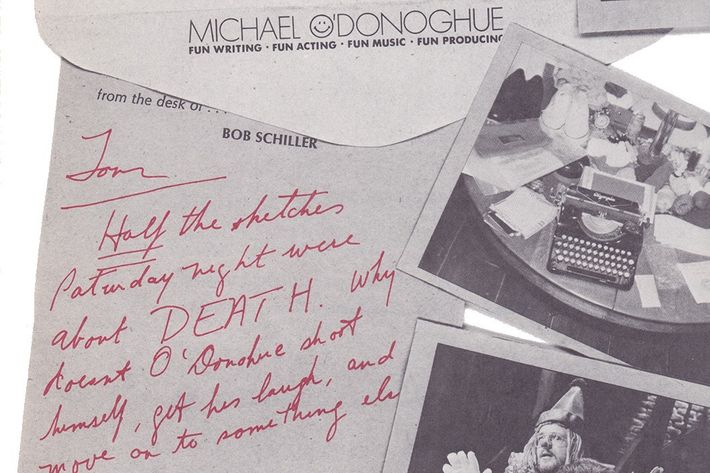
“An impossibly wide-ranging intellect with an unhealthy fascination with death and a darkly surrealist non-sequitur bent”? You are saying, “Sounds great! But did he ever write any books I need to read before I die?” Thank you for asking that.
Yes, here are three books.
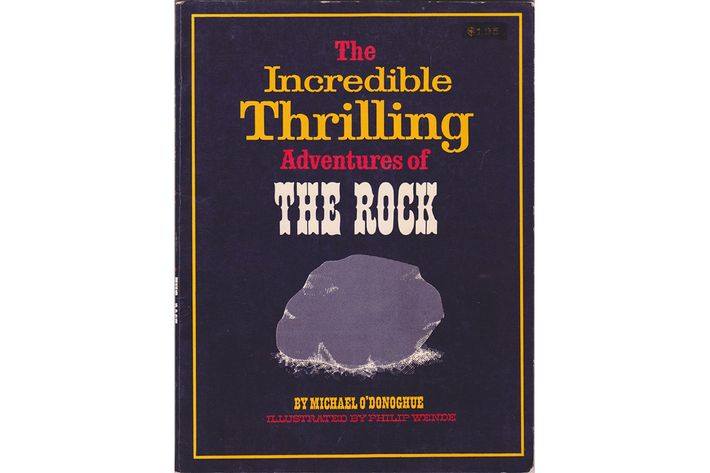
1. The Incredible Thrilling Adventures of The Rock
By Michael O’Donoghue, illustrated by Phillip Wende (Random House, 1968)
What is this book?
This book is a picture book about a rock. The book begins, “As you’ll recall, when we last left The Rock, he’d been sitting in the same spot, in the same forest, for about a hundred million years.” For the next 36 pages it’s more of the same.
Nothing happens to The Rock, and adding insult to injury a few things (A hunter throws a rock at a bear! An eminent geologist finds a rock!) do happen, but they happen to some other rock, not the titular Rock. Some years (and many, many pages) pass of nothing happening to The Rock, all the while The Rock yearning for something greater. Then, as the book is ending, two boys dressed in rags come to the forest hoping to find a Christmas tree they can bring home to their poor mother, but are dismayed to find all the trees are gone.
Then the younger boy notices The Rock and points it out to his older brother, saying, “Why don’t we take him home and paint him red and green and cover him with tinsel and glue a picture of Santa to him and put a candle on top and he could be a CHRISTMAS ROCK?”
The older brother looks thoughtfully at his younger brother, and then this:
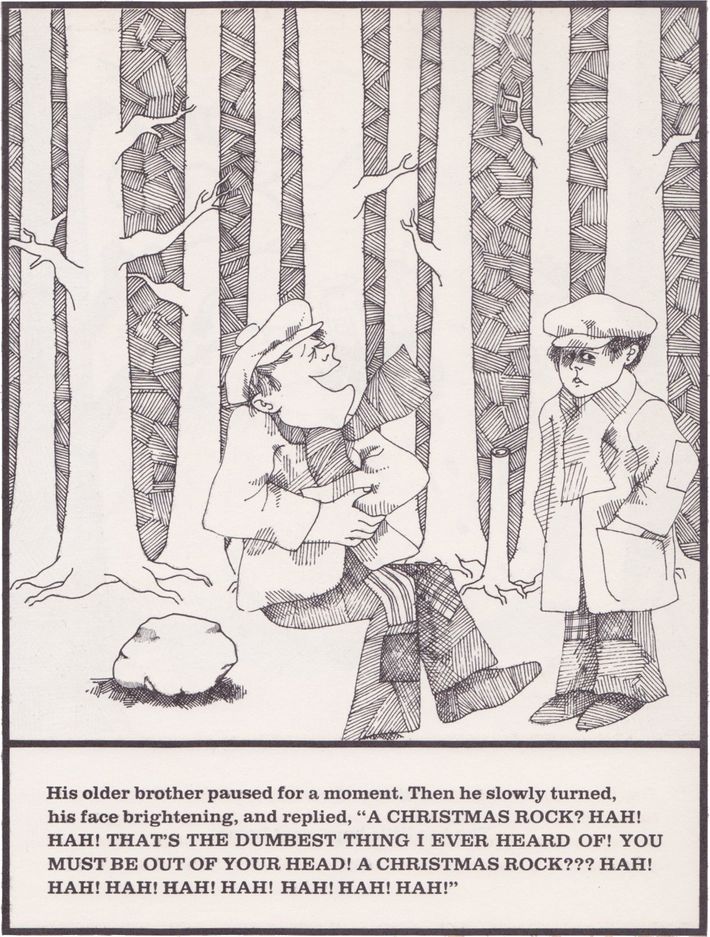
Then they boys go home. The end.
Do I actually need to read this book before I die?
No.
No, you don’t, mostly because I just ruined it for you: It is a shaggy dog story, the main joke being that Random House published it in the first place. It is sort of the book equivalent of that Spike Jonze commercial for the IKEA lamp, only (interestingly?) The Rock does actually have feelings. As such, it’s kind of a template for the “Least Loved Bedtime Stories” O’Donoghue would later do on SNL: the packaging is a children’s story, the message is that all of life is suffering.
Anything else worth knowing?
The cross-hatchy, Yellow Submarinesque illustrations are by Phillip Wende – whom you might recognize as the illustrator of other books from the ‘60s and ‘70s (in particular some Dr. Dolittle I-Can-Read books). They are sort of charming, but not “Find This on eBay” Charming. (If you do try to find it, a funny thing about this book is that it is made slightly more difficult to track down by the fact that there is an eminent (?) geologist also named Michael O’Donoghue who has published several guides to rocks and minerals, so searching for “Michael O’Donoghue Rock” brings up a lot of his stuff.)
A more interesting thing about this book is the back cover author blurb, which says:
Mr. O’Donoghue, whose motto is “The only revenge is death!!!,” is now writing a novel, THE GLASS VERTEBRAE, the central motif of which is the demise of the last known passenger pigeon in 1914 at the Cincinnati Zoo.
An author’s note in an Evergreen Review from 1968 also describes O’Donoghue as “now working on two novels, The Glass Vertebrae and an untitled work about European lesbians in the 1930’s.”
If you are hoping The Glass Vertebrae is one of the other three books to read before you die, I have some bad news. My takeaway from the way Perrin describes it in Mr. Mike is that it may have just been a bunch of promising-looking index cards that happened to be near each other in the same filing cabinet, but with no hope of ever congealing into anything else (Personally, if I ever feel excited enough about the cleverness of my central motif to tell everyone, it’s a strong indicator that I’m probably not going to see it through).
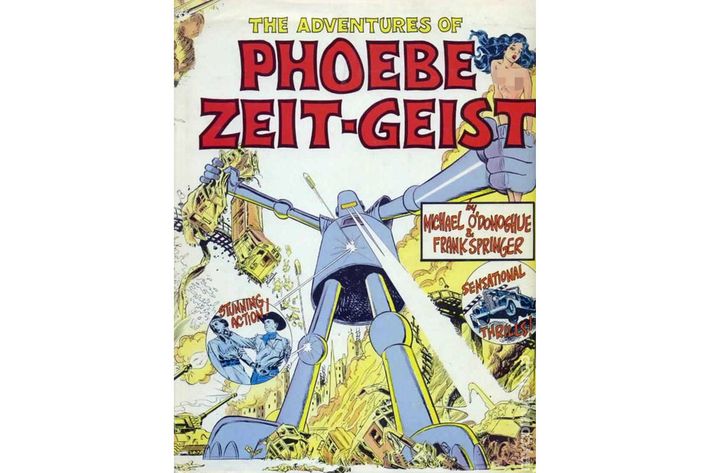
2. The Adventures of Phoebe Zeit-Geist
By Michael O’Donoghue and Frank Springer (Grove Press, 1968)
What is this book?
This is a satire of adventure comics wherein frequently unconscious heroine Phoebe Zeit-Geist is drugged, kidnapped, beaten, stripped, and facing certain death by page 7. Unlike The Rock, a lot happens to Phoebe, and the story’s constant movement and shifting locales is part of the point. The comic is never content keeping Phoebe imperiled in one place for long before it throws up a cliffhanger and then picks up someplace new on the next page (the comic was initially serialized in the Evergreen Review, and the part where this was a “satire” may have been more clear if you could only go nine panels before you had to wait a month to see what happened).
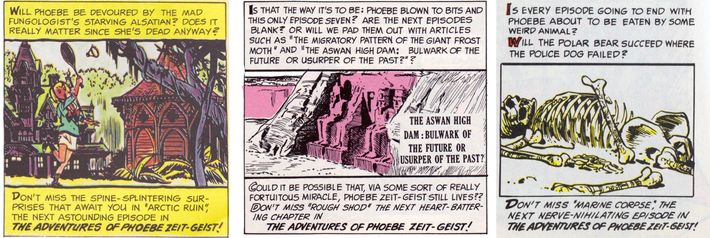
Despite some flashbacks implying she has some agency, Phoebe spends most of the book passively going from threat to threat from character after character. I counted fifty characters before I decided not to count anymore, some of which are: a sadistic ex-Nazi; Naguchi Koto, the Zen archer; death cultists; Eskimo medicine men; gay white slavers; an Afroasiatic foot fetishist; a crazed tattoo artist; a dead ringer for Norman Mailer; an eastern New Zealand lesbian gang – all of whom, for unexplained reasons, have it in for Phoebe.
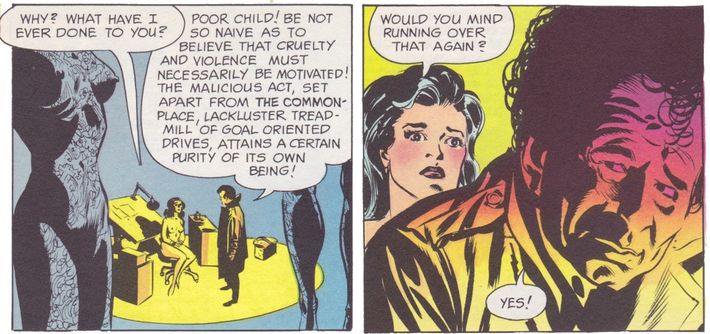
Do I actually need to read this book before I die?
Maaaaybe.
In my personal post-1994 haze of trying to get to the bottom of who/what was Michael O’Donoghue, it felt like the Rosetta Stone married the Holy Grail and had this book. It seemed like there was limitless erudition here, and it will probably still feel that way to someone on a first read.
But let’s say you’ve (I’ve) since “matured” and “are married” and “have kids” and “try to show respect for people not like you” – this book might get harder to justify having around the house. When I said the book had an Afroasiatic foot fetishist and a New Zealand lesbian gang, how you felt then is how you will feel reading this. The writing is strong, but not super deep, and while the ‘60s subculture references hit you like they’re coming out of a firehose, ultimately they don’t feel like they have much point beyond showing the author’s knowledge of them.
Some good news for people who are okay with that and who also think information wants to be free: although you can buy this book for anything from $30 to $200, you can also just search for it and find a Flickr page where the entire thing is scanned in.
Anything else worth knowing?
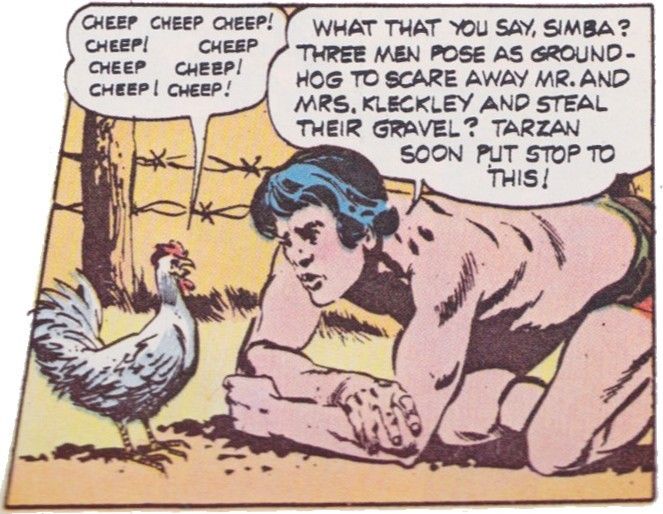
Frank Springer knows how to draw and he holds his own against O’Donoghue’s verbosity. The author blurbs say Springer and O’Donoghue’s plan was to “collaborate on at least eight more books.” (This did not happen, although Springer and O’Donoghue would collaborate again for National Lampoon, most notably with the “Tarzan of the Cows” comic.)
In a Rolling Stone interview with Chip Kidd, Doonesbury creator Gary Trudeau cites Phoebe Zeit-Geist as a major influence:
It was an absolutely brilliant, deadpan sendup of adventure comics, but with a very edgy modernist kind of approach. To this day, I hold virtually every panel in my brain. It’s very hard not to steal from it.
Which I sure don’t see, but okay, Gary Trudeau!
Toward the end of his life, O’Donoghue was in talks with Quentin Tarantino to work on a project together, and what this book strongly feels like to me is a Tarantino movie: too many references to catch on a first read, super talky, violent, demanding you constantly adjust your ironic distance, and hard to explain to your mom.
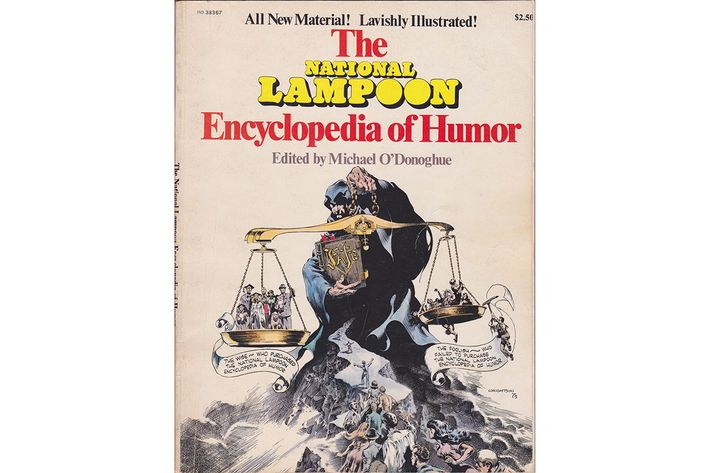
3. The National Lampoon’s Encyclopedia of Humor
Edited by Michael O’Donoghue (National Lampoon, 1973)
What is this book?
This is a “special edition” of the National Lampoon, edited by O’Donoghue, with contributions from O’Donoghue, P. J. O’Rourke, Anne Beatts, Doug Kenney, Brian McConnachie, Bruce McCall, Rick Meyerowitz, Vaughn Bode, Terry Southern, and probably every other person on the National Lampoon staff except Tony Hendra.
It’s a 150-page self-aware encyclopedia with (mostly) alphabetically arranged topics from “Automobile Sticker” to “Zen, Lizard” (others are “Die, Laugh Until I Thought I’d,” “Queer Kilban Cartoons So Listed as to Pad Out the Letter Q,” and the Contents, listed on page 22, under C).
The front cover features a depiction of Fate rewarding The Wise who purchased The National Lampoon Encyclopedia of Humor and punishing The Foolish who failed to purchase The National Lampoon Encyclopedia of Humor, and the back cover, like other Lampoon books before it, features a butt.
Inside, there are some longer pieces, but mostly quick, absurdist, funny, often cruel gems by an eminent (metaphorical) geologist and the group of friends he wasn’t currently angry at, and a big chunk of it may have been sitting in O’Donoghue’s filing cabinet fully formed, waiting for him to realize that it was already in the correct medium.
Do I actually need to read this book before I die?
Yes.
I mean, no, but this is the best of the three.
There is a lot of brilliant stuff in this book, and there is so much of it, that even the less-than-brilliant stuff benefits by association. A few standouts entries:
That Churchill Wit: A celebration of all the delightful bons mots attributed to Winston Churchill:
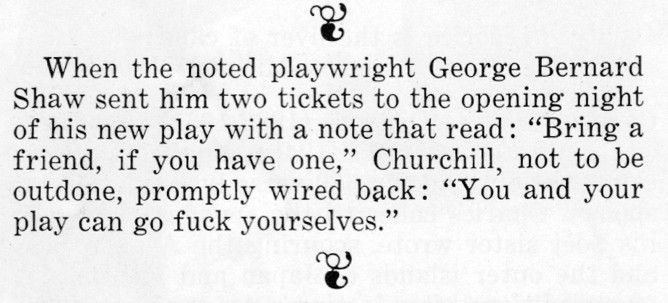
Beneath the Family of Men: Anne Beatts’ parody of the Family of Men exhibition, which pairs UPI photos of atrocities with a corresponding Bartlett’s Familiar Quotation: Alexander Pope’s “The proper study of mankind is man” appears below a photo of Nazi doctors dissecting a corpse; there are also a few severed heads. This is a tough one, and stumbling upon it among some of the other, smaller entries is like finding the Phan Thi Kim Phuc photo in the middle of a Sniglets book.
A perfect McSweeney’s joke 30 years before McSweeney’s:
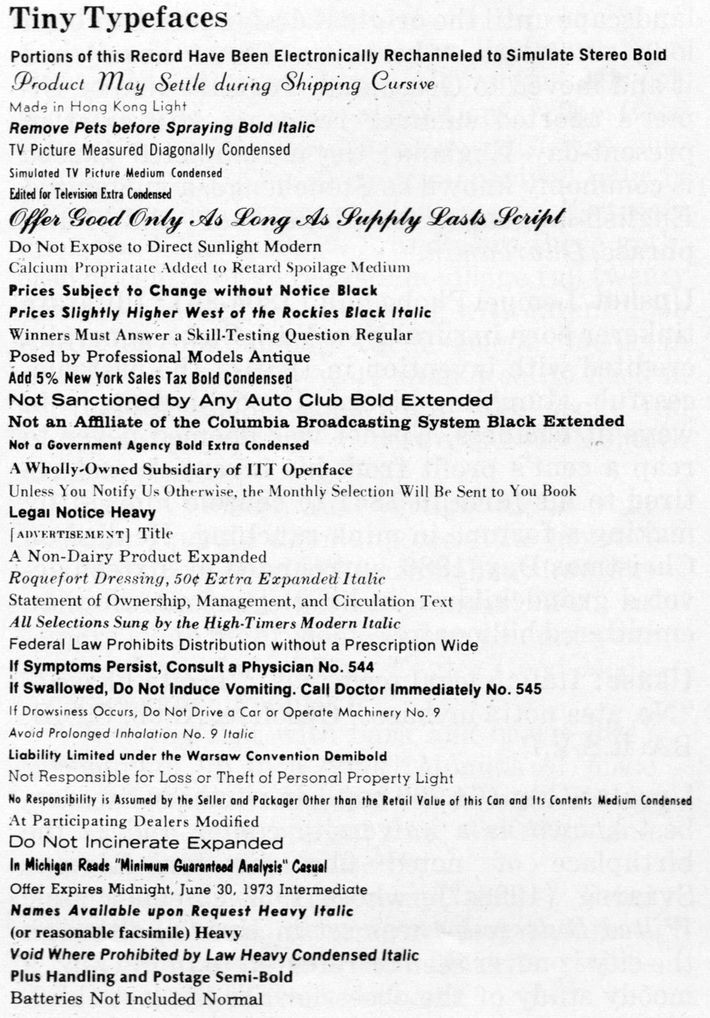
Some comic book parodies: Two by Brian McConnachie, illustrated by Russ Heath and Francis Hollidge, and one by O’Donoghue, illustrated by Heath, where the dialogue consists largely of non-sequiturs, divorced from the action. A favorite of these is the O’Donoghue/Heath Zeit-Geist-esque Cowgirls at War (“Get set for rootin’ Teuton action when those Sagebrush Sallys give Jerry the boot!”), wherein three cowgirls holed up in a bunker alternately engage in (1) a vicious battle with Nazis and (2) S&M, all the while uttering banal Romance comics dialogue.
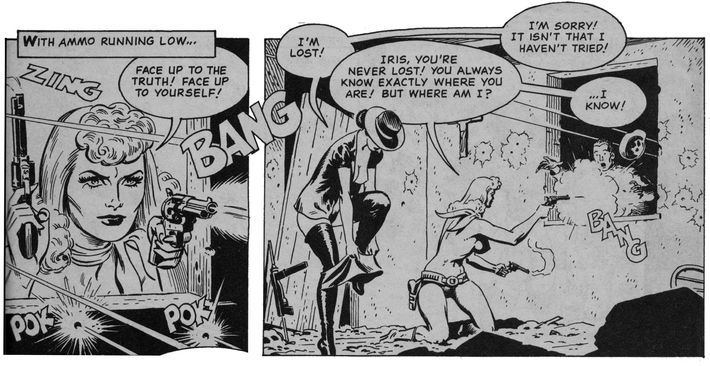
The illustrations and text accompanying each letter of the alphabet (“A is the Author who went for a walk”; “B is the Bore who engaged him to talk”) are by Edward Gorey and together form his abecedary The Chinese Obelisks, which is probably my favorite thing he did, beyond just overall existing.
And all the running jokes, like the series of E. Subitzky metacomics (Computer Printout Comics, Foldout Comics, Möbius Strip Comics, Origami Comics, Printer’s Strike Comics) that help glue the whole thing together.
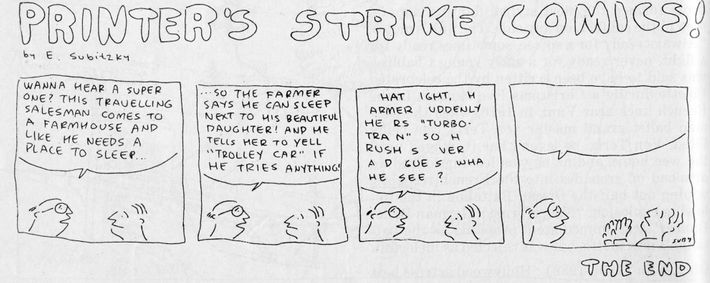
Anything else worth knowing?
I saw P.J. O’Rourke (who, according to Perrin, deserves much of the credit for the Encyclopedia actually getting finished) do a reading a long time ago, and in a Q&A afterwards he was asked about working with O’Donoghue at National Lampoon. After giving the look that artists are required to give when they’re asked about other artists, he said something along the lines of: O’Donoghue had brilliant premises but would tire quickly of them. Hearing that has absolutely colored my interpretation of O’Donoghue’s work, but I think it sounds pretty accurate: O’Donoghue’s most incisive and shocking and cruel and funny stuff comes in quickly, destroys everything, and leaves before anyone knows what happened. There is a trajectory in these three books from the one-joke premise stretched past a reasonable place to just one million jokes, hitting hard and getting out before you have time to scrutinize them.
O’Donoghue’s next big project for the Lampoon would be the Radio Hour, which in a lot of ways feels like the audiobook of the Encyclopedia and, in a lot of other ways, feels like the necessary step toward his becoming Saturday Night Live’s first head writer a few years later.
With the Encyclopedia, Radio Hour, and SNL contributions, he may have found his perfect medium, A Lot of Stuff All at Once, and this book is a snapshot from 1973 of his brain (and of the Lampoon staff’s brains) writing in that medium. Tape a photo of a passenger pigeon to the inside cover, and this book might be as close to reading The Glass Vertebrae as we’re likely to get. The passenger pigeon is dead and Michael O’Donoghue is dead, but you are not dead and this book is on eBay for like twelve dollars.
Be like The Wise.
Patrick Mortensen lives in Chicago. More of his writing can be found here and on his hard drive where it quietly waits rejection from the Quality Lit Game.




